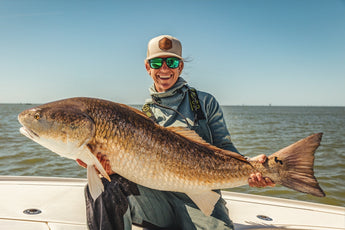I started traveling to hunt whitetails in 2014 and then western state elk in 2016. Traveling to hunt allows you to experience new places, challenge yourself, and create memories that will last a lifetime. These experiences and wild places have changed my life, and I yearn for more adventure every year. That said, it can be stressful to figure out the logistics of planning a do-it-yourself hunt in a new place far from home.
I would much rather drive to a hunting destination than fly - for a few reasons. I know my truck and its capabilities, and thanks to the added security of my DiamondBack HD, I have plenty of space to pack everything I need in case of an emergency. Rental cars don’t come with recovery equipment that may be needed in a sticky situation. In addition, you risk the chance of airlines losing your luggage, which could delay your hunt and waste precious vacation time. I experienced this while on a hunt last year, where the airline lost my bow for a few days, and my hunting partner didn’t get his gear until the last day of the trip. Talk about a bummer, to say the least.
Other situations like hunting pressure, animal populations, weather, etc., can put a damper on your hunt if you don’t have backup plans. The key to having a successful out-of-state hunt is to be organized with your gear and plans, reducing stress and anxiety when unplanned events are thrown your way.

Key Components of a Hunt Plan
A good hunt plan will act as your blueprint for all logistics and contingencies for the hunt. Hunt plans can be as simple or detailed as you want but must include the following components:
- Hunting Areas
- Choose three to five larger areas as your main targets. You can use Spartan Forge or other mapping programs to find these areas.
- Within the larger hunting area, choose the top three to five key areas of interest that you want to scout or hunt.
- Write down other pertinent information such as food sources, bedding areas, potential setups, and access routes.
- Travel Logistics
- Decide where you plan to lay your head at night. This could be a hotel, AirBNB rental, cabin, primitive campsite, or a campground.
- Important Addresses and Contacts
- Everyone thinks they can figure out where the nearest gas station or hospital is from their phone, but what happens when you don’t have cell service? Make an important address and contact list with the nearest hospital, grocery stores, taxidermists, butcher shops, gas stations, hotels, laundromats, and personal emergency contacts.
- Hunting Gear List
- Having a hunting gear list will make sure you don’t forget anything. Consider the conditions, time of year, and type of hunt when creating your list. Once you have one created, you can use this as a template for future hunts. For what I bring on a weeklong hunt, read this article.
- Hunting Rig Gear List
- Hunting rig gear lists are often overlooked in the planning phases of out-of-state hunts. Having the essential recovery tools, first aid kit, spare tire, extra fuel, extra water, fire extinguisher, and other gear neatly organized will pay off if you are ever in an unplanned situation. I keep my gear organized and secure under my Diamondback HD truck bed cover. For a more detailed list, check out my truck essentials list here.

Download your hunt plans on your phone for offline use, but always print a paper copy to keep in your glove box. Electronics are great until they don’t work the way they should. Out-of-state hunts often have you running into roadblocks and unplanned events, but having a hunt plan will make you feel confident and shift your focus to having a successful hunt bringing coolers full of lean, wild-game meat back to your family.


